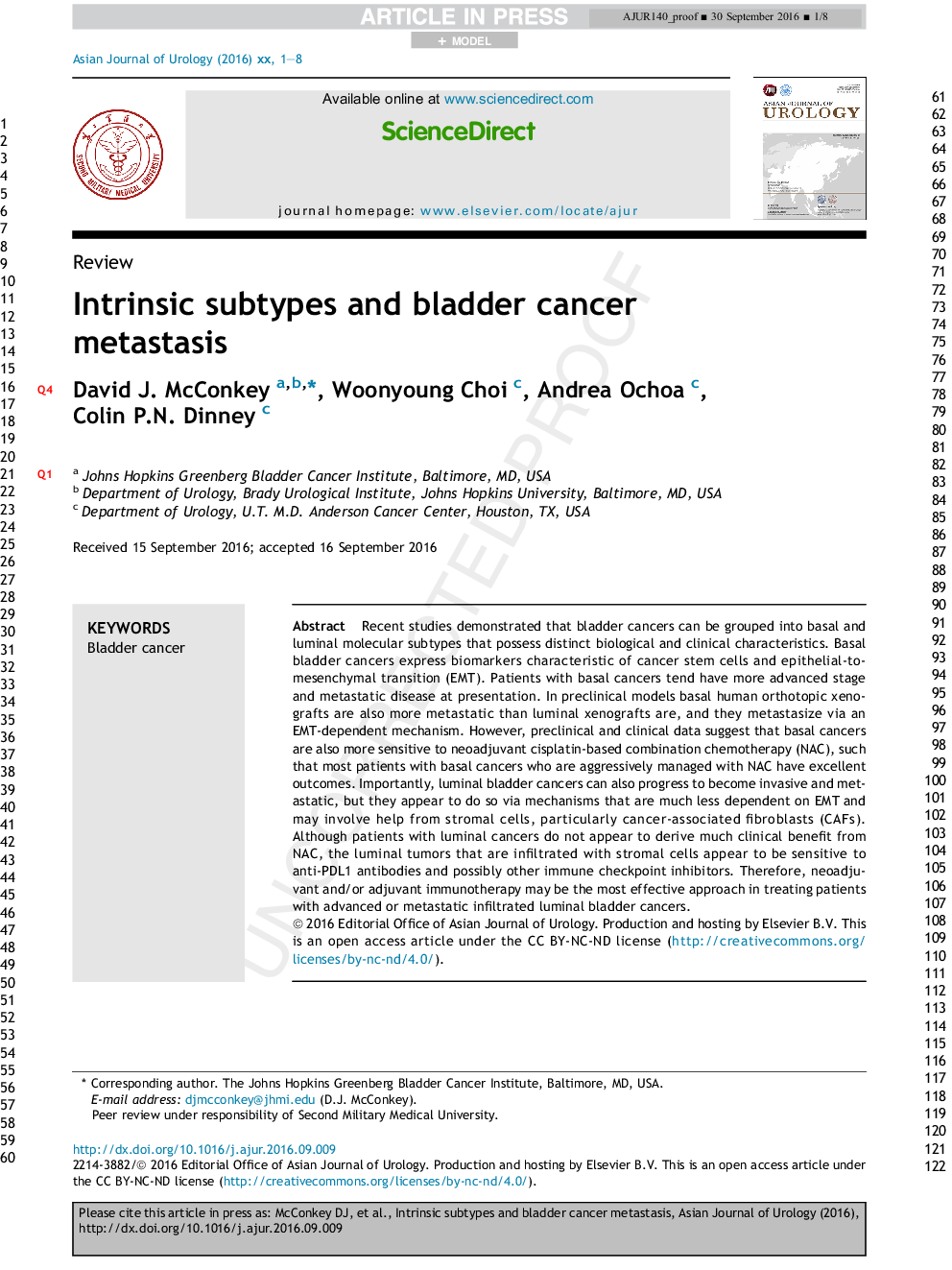| Article ID | Journal | Published Year | Pages | File Type |
|---|---|---|---|---|
| 5685923 | Asian Journal of Urology | 2016 | 8 Pages |
Abstract
Recent studies demonstrated that bladder cancers can be grouped into basal and luminal molecular subtypes that possess distinct biological and clinical characteristics. Basal bladder cancers express biomarkers characteristic of cancer stem cells and epithelial-to-mesenchymal transition (EMT). Patients with basal cancers tend have more advanced stage and metastatic disease at presentation. In preclinical models basal human orthotopic xenografts are also more metastatic than luminal xenografts are, and they metastasize via an EMT-dependent mechanism. However, preclinical and clinical data suggest that basal cancers are also more sensitive to neoadjuvant chemotherapy (NAC), such that most patients with basal cancers who are aggressively managed with NAC have excellent outcomes. Importantly, luminal bladder cancers can also progress to become invasive and metastatic, but they appear to do so via mechanisms that are much less dependent on EMT and may involve help from stromal cells, particularly cancer-associated fibroblasts (CAFs). Although patients with luminal cancers do not appear to derive much clinical benefit from NAC, the luminal tumors that are infiltrated with stromal cells appear to be sensitive to anti-PDL1 antibodies and possibly other immune checkpoint inhibitors. Therefore, neoadjuvant and/or adjuvant immunotherapy may be the most effective approach in treating patients with advanced or metastatic infiltrated luminal bladder cancers.
Related Topics
Health Sciences
Medicine and Dentistry
Nephrology
Authors
David J. McConkey, Woonyoung Choi, Andrea Ochoa, Colin P.N. Dinney,
